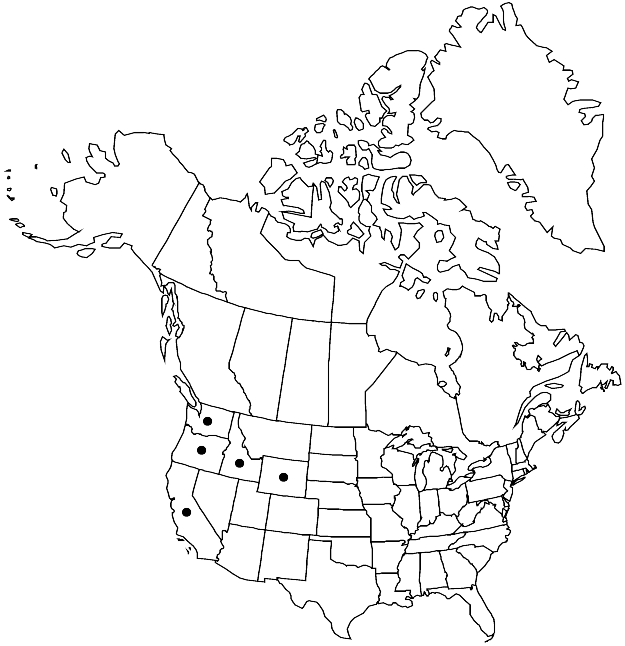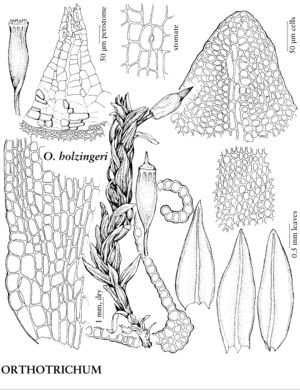Orthotrichum holzingeri
Contr. U.S. Natl. Herb. 3: 270. 1895.
Plants to 3 cm, light green to olive green. Stem leaves stiff, erect-appressed when dry, oblong-lanceolate to ovate-lanceolate, 1.8–3 mm; margins narrowly recurved-revolute to near apex, entire; apex broadly acute to obtuse; basal laminal cells elongate to long-rectangular, walls thick, sometimes nodose; distal cells 7–12 µm, 1- stratose, smooth. Specialized asexual reproduction absent. Sexual condition gonioautoicous. Seta 2–3 mm. Capsule fully exserted, cylindric, 1.5–2.2 mm, slightly to distinctly 8-plicate to mid capsule; stomata superficial; peristome single; prostome present, large; exostome teeth 16, erect to spreading-reflexed when old and dry, smooth; endostome segments absent. Calyptra short-conic, smooth, naked. Spores 13–18 µm.
Habitat: Seasonally wet rock in small streams of dry montane forests
Elevation: moderate to high elevations (1000-2000 m)
Distribution

Calif., Idaho, Oreg., Wash., Wyo.
Discussion
Orthotrichum holzingeri is distinguished by the smooth laminal cells, smooth exostome, naked calyptra, and exserted, slightly ribbed capsules. The species is distinct and endemic to a relatively small region in western North America; it is most closely related to O. laevigatum.
Selected References
None.
